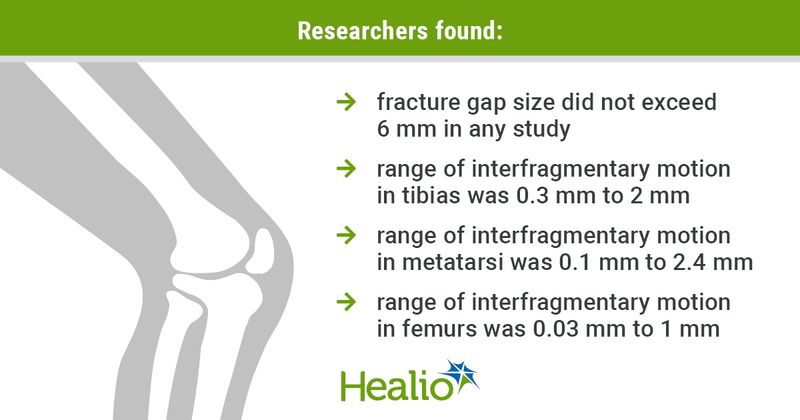Favorable association seen between small interfragmentary motion and fracture healing
Click Here to Manage Email Alerts
LAS VEGAS — The evidence in published orthopedic literature is insufficient to determine a definite correlation between early axial interfragmentary motion and fracture healing outcomes, according to data presented here.
“Preliminary evidence does suggest favorable association between small interfragmentary motion and fracture healing. However, despite reviewing half a century of research, the optimal range of interfragmentary motion needed to stimulate successful fracture healing remains elusive,” Griffin R. Rechter, BS, said at the American Academy of Orthopaedic Surgeons Annual Meeting.

Rechter and colleagues searched PubMed, OVID and Medline databases and identified 4,972 studies that assessed axial interfragmentary motion and fracture healing outcomes in animals and humans. They extracted more than 40 data points for input on standardized spreadsheets and analysis. Data included interfragmentary motion, fracture location, methodology, histology, biomechanics and radiographic fracture healing. Two independent reviewers completed full-text analysis on the published studies, which lead to 305 studies included.

Overall, 15 studies, of which two were human studies and 13 were animal studies, met the study inclusion criteria. This totaled 605 fractures or osteotomies in skeletally mature participants and included 423 animals and 182 humans, with the tibia being the most common area. Median time to analysis was 9 weeks. Additionally, 93% of studies used an external fixator to adjust the superior callus stiffness and biomechanical rigidity.
Rechter and colleagues found fracture gap size did not exceed 6 mm in any study. The range of interfragmentary motion in tibias was 0.3 mm to 2 mm. The range of interfragmentary motion was 0.1 mm to 2.4 mm in metatarsi and 0.03 mm to 1 mm in femurs.
Rechter said for studies that allowed rigid vs. flexible fixation, those that allowed early micromovement produced superior callus stiffness and biomechanical rigidity. While flexible constructs always produced a larger callus size, the callus strength was inferior in 57% of those studies, he said.
Researchers found no significant association between the micromotion at the femur, but they found smaller interfragmentary motion at the tibia. The interfragmentary motion exerted its influence in the fracture healing environment at 4 weeks or less, Rechter said.
“Smaller interfragmentary motion was always sufficient to stimulate callus formation, however, larger could be tolerated,” he said.
In those, researchers found larger interfragmentary motions led to larger callus size and resulted in an inferior callus strength.
“The amount of interfragmentary motion was never able to compensate for the inability to stabilize the fracture gap size,” he said.

